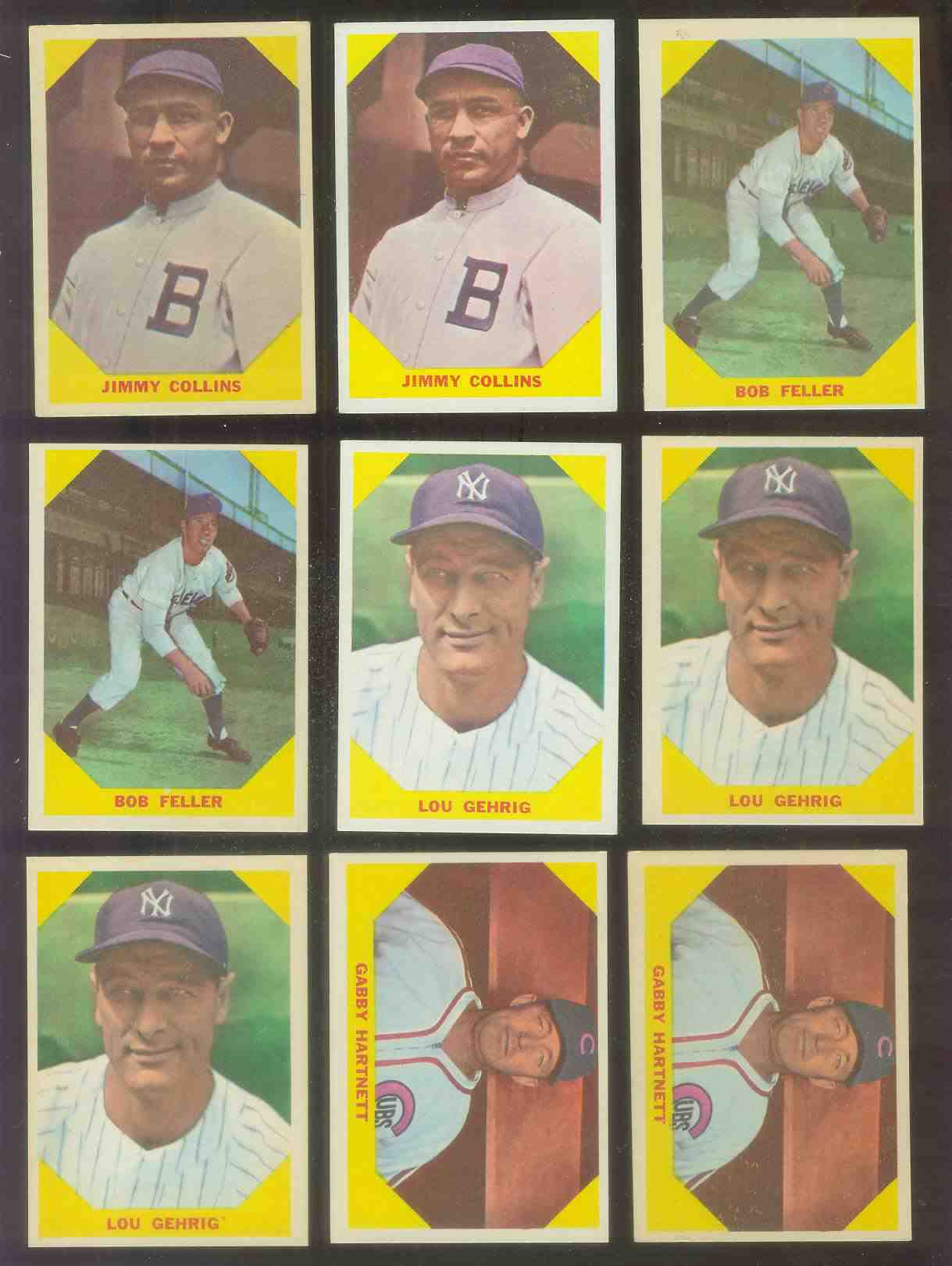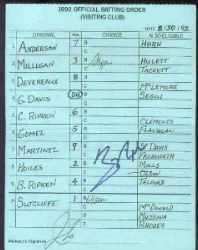1960 Fleer # 26 Bob Feller (Indians)


Please wander around the website for more info, prices, values & images
on vintage baseball, football, basketball, hockey, sport and non-sports cards.
1968 Baseball Marbles, Creative Creations These clear plastic 3/4" marbles contained paper inserts with the
player's portrait on front and facsimile autograph on back.
These clear plastic 3/4" marbles contained paper inserts with the
player's portrait on front and facsimile autograph on back. Issued in collectible blister packs with 20 marbles. The blister packs measure 9-3/4" x 10-1/2". The marbles were sealed on front; the pack’s back featured a design with around 60 facsimile signatures.  The package mentioned 24 series of 20 marbles each (480 total)
but only 120 different marbles were actually created.
The package mentioned 24 series of 20 marbles each (480 total)
but only 120 different marbles were actually created.  One of the more interesting collectibles from the late 1960's, they are
still sought after by both team & player collectors.
One of the more interesting collectibles from the late 1960's, they are
still sought after by both team & player collectors.
Click to view - 1970 Chemtoy SuperBalls |

Authentic Major League SIGNED |

1985 O-Pee-Chee (OPC) Baseball cards |

Starting approximately in 1886, sportscards, mostly baseball cards, were often included with tobacco products, for promotional purposes and also because the card reinforced the packaging and protected cigarettes from damage. These sports cards are referred to as tobacco cards in the baseball card hobby. Over the next few years many different companies produced baseball cards. Tobacco cards soon started to disappear as the American Tobacco Company tried to develop a monopoly by buying out other companies.
They were reintroduced in the 1900s, as American Tobacco came under pressure from antitrust action and Turkish competition. The most famous and most expensive, baseball card is the rare T206 Honus Wagner. The card exists in very limited quantities compared to others of its type because Wagner forced the card to be removed from printing. It is widely (and incorrectly) believed that Wagner did so because he refused to promote tobacco, but the true explanation lies in a dispute over compensation.
Soon other companies also began producing baseball and football cards. Sports magazines such as The Sporting News were early entries to the market. Candy manufacturers soon joined the fray and reflected a shift toward a younger target audience for cards. Caramel companies were particularly active and baseball cards were one of the first prizes to be included in Cracker Jacks. World War I soon suppressed baseball card production.
 These are the official lineup cards SIGNED BY THE MANAGER & given
to the home plate umpire before the game with the team's line-up
& batting order !!! Making them even neater, often managers made
lineup changes on these cards throughout the game.
These official lineup cards were SIGNED BY THE MANAGER and presented
to the home plate umpire before the game. They detailed the team's lineup and
batting order. Managers often made lineup changes on these cards throughout
the game, making them even more unique.
These are the official lineup cards SIGNED BY THE MANAGER & given
to the home plate umpire before the game with the team's line-up
& batting order !!! Making them even neater, often managers made
lineup changes on these cards throughout the game.
These official lineup cards were SIGNED BY THE MANAGER and presented
to the home plate umpire before the game. They detailed the team's lineup and
batting order. Managers often made lineup changes on these cards throughout
the game, making them even more unique.
